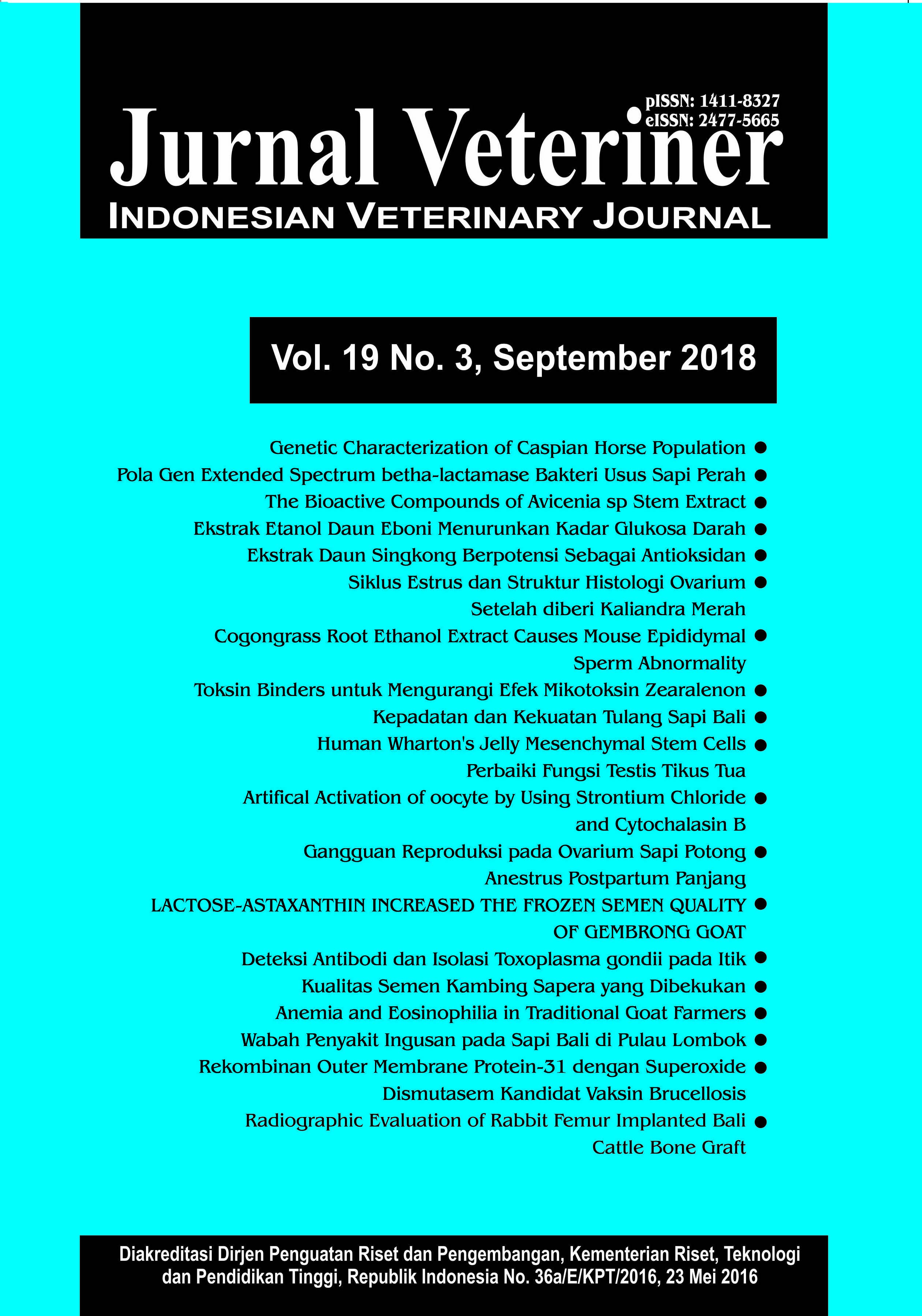Anemia and Eosinophilia in Traditional Goat Farmers: Early Markers of Strongyle Zoonoses (ANEMIA DAN EOSINOFILIA PADA PETERNAK KAMBING TRADISIONAL: PENANDA AWAL ZOONOSIS STRONGYLUS)
Abstract
The spread of zoonoses between humans and animals can increase with the presence of specific contacts between the two. As well as intensive contact between farmer and goat. Anemia is a common hematologic change encountered in infection and zoonoses so it can be used as an early indicator for zoonoses. Nevertheless, anemia itself cannot lead to a specific etiology thus differential leukocyte count and goat fecal examination can be a good supporting test. Understanding the etiologies of the disease is critically important in preventing the decline in human’s quality of life as well as economic losses. This cross-sectional study included 30 farmers who were recruited by purposive sampling method. They agreed to do a CBC examination with 22 parameters. From the test, 37% of them showed mild anemia. There were 45% farmers with microcytic hypochromic anemia while the rest had normocytic normochromic anemia. There was an increased number in eosinophil and segmented neutrophil from anemic farmers, 18% and 9% respectively. Besides, 13% of goats physical examination indicated as below normal conditions characterized by lean bodies, lymph node swelling, and pale mucosa. Whereas 38% goat’s fecal test showed evidence of Strongyle eggs. The research suggests a possible interrelation between animals, humans, and the environment with an increased risk of zoonoses. Anemia and eosinophilia that occur can be an early marker which will be decisive not only for the success of the disease progression reduction but also the long term suppression of the economic loss.



















